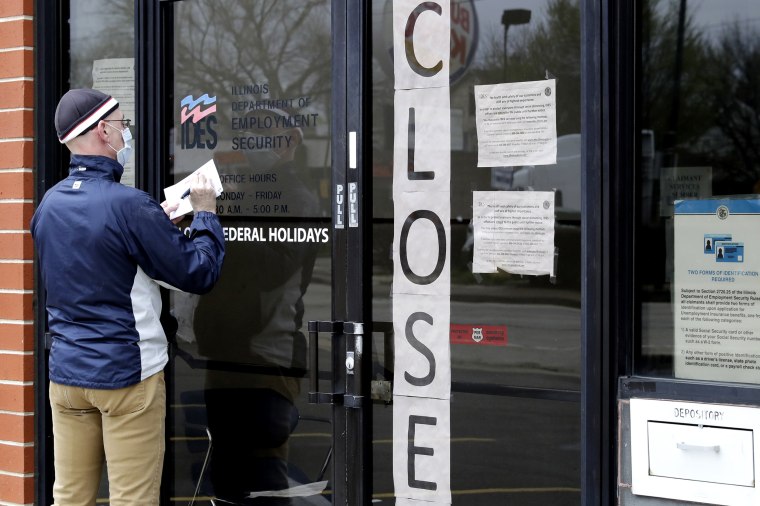The U.S. economy lost an unprecedented 20.5 million jobs in April, shattering all previous records and hitting the highest level since the Great Depression.
The unemployment rate soared to 14.7 percent, up from 4.4 percent in March after months at a half-century low, according to the monthly employment report, released Friday by the Department of Labor.
In just over a month, the coronavirus has wiped out all job gains since the Great Recession and brought the country's decade-long record economic growth streak to an abrupt halt.
“This is the biggest and most acute shock that we’ve seen in post-war history,” said Michelle Meyer, head of U.S. economics at Bank of America.
April's staggering jobless total is more than 10 times that of the previous unemployment record of 1.96 million, set in September 1945, when American soldiers returned home after World War II. The new unemployment rate is the worst since the height of the Great Depression, when it hit 24.9 percent.
The economy has been devastated by the coronavirus pandemic, with stores and businesses shut down for weeks, in order to maintain social distancing and prevent the spread of the coronavirus. Millions of workers have been laid off, put on furlough, or made to work from home.
Since mid-March, 33.5 million people have filed for initial unemployment claims, with 22.6 million seeking ongoing benefits — by far surpassing the recessionary peak of 6.6 million.
"If we thought the worst we’d ever see with economic data would be during the financial crisis and Great Recession, the virus proved us wrong," said Mark Hamrick, senior economic analyst at Bankrate.
President Donald Trump has pushed for a swift turnaround after weeks of lockdowns, saying he believes the economy will "transition into greatness" in the third quarter.
However, as the country slowly reopens, the economy is not expected to simply bounce back. Many customers remain hesitant about returning to restaurants and bars, watching movies, or attending sporting events.
And despite trillions of dollars in emergency relief from the government, multiple rounds of crisis intervention from the Federal Reserve, and fiscal stimulus such as the Paycheck Protection Program, economists warn that many businesses will not survive. Those who have taken PPP loans are funded for only eight weeks, after which time they may need to make further cutbacks — and employees who were furloughed may become permanent layoffs.
Major retailers such as Neiman Marcus and J.Crew have already filed for bankruptcy, with many more skipping rent payments in order to preserve their business.
Yet some economists say the historic April jobs report does not even capture the full picture.
In an interview with Savannah Guthrie on NBC's "TODAY" show Thursday morning, President of the Federal Reserve Bank of Minneapolis, Neel Kashkari, said Friday's official unemployment rate is likely to "understate how bad the damage has been. I think the real number is probably around 23 or 24 percent. It's devastating."
The monthly jobs report surveys the number of people who are actively seeking work, but with millions of workers expecting to return to their job once the shutdowns end, they are not currently seeking other employment, and would not be captured in the count. The Bureau of Labor Statistics, which compiles the data for the report, noted that if these workers were included, the unemployment rate would have been almost 5 percent higher, or close to 20 percent.

